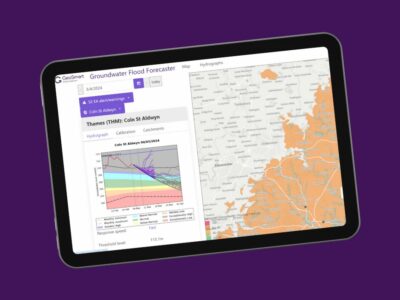Knowledge Hub
This essential, free resource provides property professionals with a comprehensive library of guidance, case studies and papers to help with their clients’ development projects on Contaminated Land, Flood Risk, Sustainable Drainage and Groundwater Flood Risk.
Contaminated Land
It is essential to review site history and assess land quality at the earliest stage for your client. If a potential pollution risk is identified, for example through our historic site research, then a site investigation can be undertaken to understand the nature of any possible contamination.
Flood Risk
One of the biggest constraints will be flood risk zoning for development. Your role is to identify what the limitations are and the potential design responses where development would be allowed. You need to assess the site in the context of its flood zones, engagement with the regulators and review of the Local Authority’s Strategic Flood Risk Assessment.
Sustainable Drainage
The site may require effective drainage with a series of natural features as a planning constraint. You may need to guide your client through this as you develop the scheme design and plot numbers as part of viability calculations.
Planning submissions need to provide a site drainage assessment and run off calculations and drainage strategy options, which may need to include a series of sustainable drainage system (SuDS) features.
Groundwater Flood Risk
You may have purchased a site with a view to develop it, or you are an architect with a client who needs to appraise the site for master planning submission or to meet conditions. In both instances, you need to know the drainage characteristics and whether groundwater could have an impact on the surface water flood management and sustainable drainage approach, as determined by the Local Planning Authority. If the site has an industrial past, there may be contaminants in the soil which could be spread by groundwater.




